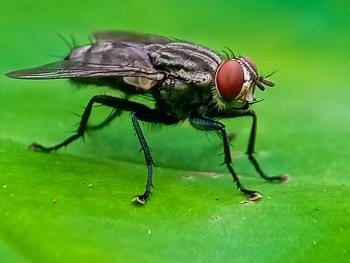
Parasites: Treatment and control (Proceedings)
Strategic deworming programs were developed for Ostertagia problems in cattle, and are of limited use with Haemonchus infestations in small ruminants.
Strategic Deworming
Strategic deworming programs were developed for Ostertagia problems in cattle, and are of limited use with Haemonchus infestations in small ruminants. Strategic deworming requires deworming when most of the parasites are in animal and not in environment (winter for Haemonchus). However, in areas with mild winters this is difficult, as some larva will survive the winter. One type of strategic deworming program recommended in small ruminants is to deworm 3 weeks before first kid/lamb is due and every 3-4 weeks until the last kid/lamb born is three weeks old. This should minimize problems associated with the periparturient rise in EPGs.
Tactical Deworming
Tactical deworming used to be recommended when EPG was >1000 in winter and >2000 in summer. Although this method can be utilized in special cases, it is best replaced by the FAMACHA program discussed later. Tactical deworming can be considered when weather conditions are conducive to rapid buildup of infective larvae on pasture. This may occur 10-14 days following a rain, especially if the rain follows a drought.
Salvage Deworming
Although tactical and strategic deworming are important, they should be performed in the context of a salvage deworming program. The FAMACHA program is the most common salvage deworming program currently being recommended (should only be used for Haemonchosis problems). This program is designed to slow development of anthelmintic resistance by selective treatment and increased refugia of susceptible parasites, which increases the number of sensitive genes in the gene pool and dilutes the number of resistant genes in the parasites. It also selects animals that are genetically resistant to parasites.
The FAMACHA program calls for examination of the mucous membrane color of the lower eyelid, and comparison of the color to a chart (see the website
Partially effective drugs (<90% effective as determined by pre- and post-treatment EPG comparisons or the Drenchrite® test) are used in combination on animals that are selected as needing treatment. Highly effective products should be reserved for emergency use only. This also leaves a refugia of susceptible parasites to mate with resistant ones.
Animals requiring repeat treatments should be culled, which eventually leads to selection of parasite resistant animals. And, since those animals showing the worst clinical signs have the biggest parasite burdens and shed the most parasite eggs (~20% of animals harbor ~80% of the parasites), culling these animals helps decrease pasture contamination.
"Smart Drenching" is recommended in conjunction with FAMACHA. As previously stated the resistance patterns for a farm must be known, either through fecal EPGs or the Drenchrite® test to properly use these programs. Some of the "Smart Drenching recommendations are: administer anthelmintics at two times cattle dose for the heaviest animal except with levamisole; deliver the drug over tongue into pharynx; if not on the FAMACHA program use one class of dewormer for at least one year or until it doesn't work (do not rotate monthly); dry lot animals for 12-24 and fast before deworming; and repeat administration in 12 hours.
Pasture Management
Sound pasture management is a must for any deworming program to be successful long term. This consists of minimizing stocking rates (too late on most farms) and the use "safe" pastures. Safe pastures are those used for forage crops, those grazed by horses or cattle, or those not grazed by small ruminants for 3 months in the warm season and 6 months in the cool season. Turning out only goats that have been treated onto "safe" pastures is not recommended. Turn out groups of goats containing some untreated to maximize refugia and minimize buildup of resistant parasites. Intensive pasture rotation systems that maximize forage utilization and providing browse to goats also help.
Keeping resistant parasites off the farm is critical. The fastest way to get anthelmintic resistance on a farm is to buy it. Quarantine of newly purchased animals and deworming them with dewormers from three different classes at once is recommended. A fecal should be checked to make sure they are clean before tuning out onto a contaminated pasture with refugia.
New Treatments Being Researched
Tannins in forage (fresh or hay) to decrease egg hatching and infective larvae development (ex. Sericea lespedeza), feeding nematode trapping fungi, copper oxide wires, breed selection, and vaccines are all being investigated. For more information on current research, FAMACHA and Smart Drenching, visit the website:
Newsletter
From exam room tips to practice management insights, get trusted veterinary news delivered straight to your inbox—subscribe to dvm360.



